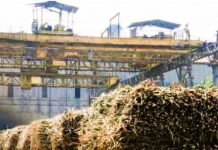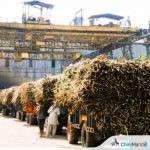WAITING ON THE RAIN THAT WILL NOT COME
The sugar futures market in New York closed out the week, which was shortened by the Labor Day holiday in the United States, with October/2024 at 18.90 cents per pound, registering a 54-point drop, or 11.90 dollars per ton, compared to the previous week. This drop was influenced by the deteriorating macroeconomic scenario that affected all risk assets. The biggest surprise of the week was the reduction of the short position of the funds, which now totals just 8,737 lots.
This movement of funds covering their shorts has significantly reduced the vulnerability of the market, which had been heightened by the speculative position of the funds. In a scenario of drought and crop reduction, it is believed that this combination could create some explosive pressure on the sugar market. However, the repurchase carried out by the funds has not pushed up the market since the mills/trading companies have taken advantage of appealing prices in Brazilian real per ton to fix their sales, neutralizing the effect of this movement of the funds.
The situation in the field, especially in the sugarcane fields of the Center-South of Brazil, remains critical. Wildfires continue to occur in isolated areas, and the lack of rain has worsened the stress on the crops. Expectations regarding the total volume of sugarcane to be processed and the sugar production mix have already been revised. Our current forecast is for a production of 590 million tons of sugarcane and 37.7 million tons of sugar, a reduction of four million tons compared to the early estimate at the beginning of the crop.
Although this drop in Brazilian production is significant, the global sugar market should not face a large shortage since Brazil has maintained a strong export pace. However, other global factors are contributing to the restrictive supply next year. India, for example, is expected to extend the ban on sugar exports to ensure domestic supply after a reduction in production, the first in four years. The Indian government aims to increase the ethanol mix in gasoline to 20% by 2025-26 and, to achieve this, it is considering raising the ethanol purchase price by oil companies and has already authorized the use of molasses for its production.
The size of the next crop in the Center-South of Brazil will be crucial in determining the direction of international sugar prices. However, it is too early to accurately predict the impact of the drought on the fields and the actual degree of loss caused by the water deficit. Though we cannot measure this damage at present, it is already possible to conjecture that the scenario will be bullish.
Currently, the factors that can contribute to a price rise in New York seem to have more consistency and greater probability. The reduction in interest rates in the United States, along with a possible SELIC increase in Brazil, should attract more dollars and strengthen the Brazilian real, which tends to improve the prices of commodities, including sugar. Moreover, India’s export restrictions and government incentives for ethanol in that country are also factors that could support an appreciation of sugar in the international market.
In the Brazilian domestic market, the Otto cycle has set a new record with fuel consumption reaching 58.3 billion liters, which strengthens the demand for ethanol and could impact the sugar-ethanol production mix at the mills. However, there are a few factors that could limit this price rise. One of them is the possibility of a gasoline price reduction by Petrobras, as there is room for adjustments. Additionally, the Chinese economy is showing signs of a slowdown, and the risk of a recession in the United States, pointed out by some analysts, could also exert downward pressure on prices.
In summary, the sugar market in New York continues to be influenced by a series of both bullish and bearish factors, but the bullish elements, such as the drought in Brazil, the Indian restrictions, and the expectation of a weaker dollar, seem to carry more weight at the moment. Nevertheless, as the scenario is still unfolding, a more detailed analysis of the damage caused by the drought and the impact of global demand will be crucial in the coming months.
Technical analysis (by Marcelo Moreira): In October/2024, the 200-day moving average closed out the week at 19.98 cents per pound and once again proved to be an important resistance level to break! October/2024 traded as high as 19.98 cents per pound and closed out at 18.91 cents per pound – “on top of” the important support levels of the 100- and 50-day moving averages (19.01 and 18.94, respectively). After breaking these supports, the next target will be 17.30 cents per pound!
Mark your calendar. The next in-person Advanced Course on Futures and Options – Agricultural Commodities has already been scheduled for October 29 and 30 in São Paulo. Join the more than 3,000 professionals who have already taken this course over the past 20 years. For more information, contact priscilla@archerconsulting.com.br.
To read the previous episodes of World Sugar Market – Weekly Comment, click here
To get in touch with Mr. Arnaldo, write on arnaldo@archerconsulting.com.br
Continue reading Chinimandi.com for more news about the Sugar and Allied Sectors.












